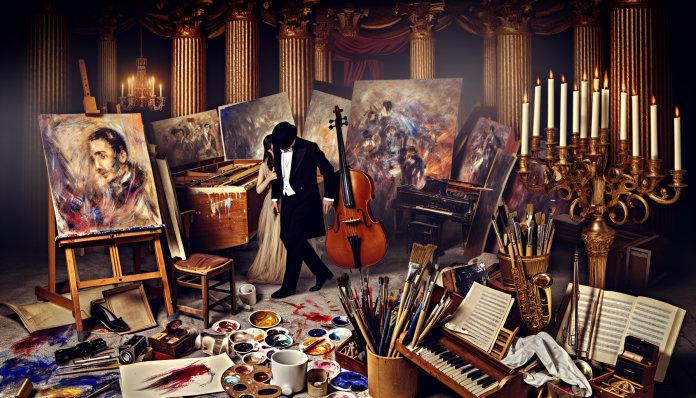The Secret Sex Life of Toulouse-Lautrec: Brothels, Lovers, and Art
Introduction
Henri de Toulouse-Lautrec, born in 1864, was no ordinary artist. Known for his vivid depictions of Parisian nightlife, his paintings serve as a vibrant snapshot of the late 19th-century bohemian lifestyle. At the heart of his work was a fascinating world—brothels, cabarets, and the ladies who painted the town red. Toulouse-Lautrec’s life was inextricably linked to this scandalous milieu, and his relationships with the women of the night were both a source of inspiration and societal outrage. The period—marked by moral ambiguity and a growing acceptance of sexual liberation—set the stage for profound explorations of intimacy and desire.
The Scandal
Toulouse-Lautrec frequented Parisian brothels, immersing himself in the lives of the courtesans who inhabited them. His fascination was more than mere voyeurism; it became a muse that drove his artistic vision. However, this connection between the artist and the women raised eyebrows in a society grappling with shifting sexual norms.
One of the most notable figures in Toulouse-Lautrec’s life was the notorious La Goulue, a can-can dancer who epitomized the era’s enthralling yet debauched atmosphere. Lautrec’s keen eye for detail rarely shied away from the raw realities of these women’s lives. His famous lithograph “Moulin Rouge: La Goulue” captures not just her dance but hints at the sexual liberation associated with the era.
However, his unfiltered portrayal of brothel life caused an uproar among Parisian elites. Critics labeled his work as scandalous, claiming it perpetuated immorality. In a letter, Lautrec stated, “I just want to capture the vibrant life around me, not the false morality of polite society.” This rebellion against the conservative values of his time positioned him as both a cultural icon and a societal pariah.
Moral and Cultural Analysis
The reaction to Lautrec’s lifestyle echoed the broader societal conflicts of the Belle Époque, a time when the traditional views on sexuality were being challenged. While bohemian circles celebrated sexual liberation, the bourgeois class recoiled, viewing it as a descent into moral decadence.
As details of his love affairs and relationships with these women spread throughout Paris, social discourse reflected the tension between acceptance and condemnation. His life intertwined with the working-class lives of the courtesans epitomized a profound divide; Lautrec was admired by some as a pioneer of modern art, yet others viewed him as a flamboyant degenerate.
Fast forward to today, and the societal reaction is vastly different. While the stigma surrounding sex work persists in several places, many contemporary discussions favor agency and empowerment, questioning the dynamics of exploitation versus choice within the sex industry. The open portrayal of sexuality in art is now often celebrated for its honesty and exploration of human relationships, rather than met with indignation.
- Modern perceptions:
- Views on sex work have evolved; it’s increasingly framed as a legitimate choice.
- Artistic representation is encouraged, allowing for more nuanced conversations about sexuality and power dynamics.
Toulouse-Lautrec’s life and work reveal not only an artist’s quest for authenticity but also a cultural lens through which we can examine evolving attitudes toward sex and intimacy. His experiences in the world of brothels shaped not only his art but also laid bare the tensions of an era in transition, highlighting the intersection of taboo and creativity.

